
More and more noise cancelling headphones and earbuds are being advertised as having adaptive noise cancellation.
But is that just a sales pitch or are we getting some real benefits?
I recently experienced several such adaptive noise cancelling headphones and earbuds.
The results were sometimes stunningly good, but in other situations the same adaptive headphones performed quite a bit worse than old-school “fixed” active noise cancelling headphones.
Note: The abbreviation ANC stands for active noise cancelling/cancellation, so there is adaptive ANC and there is fixed ANC.
This article addresses several points from a user’s perspective:
- What adaptive ANC is and how it compares to fixed ANC
- What is working well for me and what doesn’t work so well
- Some noteworthy innovations in adaptive ANC I have come across
- What to watch out for when buying headphones with adaptive noise cancellation
Contents
Automatic adjustment of noise reduction strength
One idea of adaptive noise cancellation is to give you more noise reduction in louder environments and less in quieter settings.
To facilitate this, the headphones may automatically switch between different ANC strengths, such as low, medium, and high, depending on how much environmental noise they detect.
Some adaptive headphones allow you to toggle between adaptive and traditional—fixed active noise cancelling strength.
With others, adaptive ANC is the only choice.
With traditional, fixed ANC there may only be one noise cancelling strength or you may have to manually toggle between different strengths.
Some headphones even have sliders allowing you to adjust the noise cancelling strength and perhaps store your preferred settings as presets that can be accessed via a button or tap-action on the headphones.
How well did auto-adjusting the noise cancelling strength work for me in real life?
It generally worked very well in moderately loud & loud environments (e.g. traffic noise, airplane cabin, vacuum cleaner).
In quiet environments with only intermittent noises, however, adaptive ANC sometimes struggled.
The headphones auto selected ANC low and did not always respond fast enough to cancel intermittent noises (e.g., truck rumble, footfalls).
For example, I experienced this “low ANC” in quieter environments with two otherwise very effective noise cancelling headphones, the over-ear Sony WH-1000XM5, and the in-ear AirPods Pro 2.
The M5 have what Sony calls an Auto NC Optimizer.
Sony’s helpguide states “…if it is used in a very quiet environment, you may not feel the effect of noise canceling…”
And in a support article, they recommend not to turn on the noise cancelling function if there is little ambient noise:

But that is often not what I want to do:
With ANC turned off, I would not get a reduction of intermittent noises in an otherwise “tranquil environment” beyond what the ear cups do passively.
For the AirPods Pro 2, I haven’t found a statement by Apple that these earbuds have adaptive ANC, but in my experience and tests they did automatically dial down noise cancelling strength.
To learn more about the test results for the Pro 2 and some hacks to improve the ANC effectiveness in low noise situations, please check my post on AirPods Pro 2 ANC performance and improvement tips.
In contrast to these stated limitations in low-noise environments, my headphones with “fixed” ANC (e.g., the predecessor of the M5, the Sony WH-1000XM4 and the Bose QC45) generally do a good job in both quiet and loud conditions.
Note: You’ll often see statements, such as “noise reduction of up to 35 decibels.” My question would be: when and against what?
Noise cancellation optimization for the loudest frequencies
Some headphones optimize the ANC for the dominant noise frequencies they detect.
They can, for example optimize for low frequency noise reduction when you have a stream of rumbling trucks passing by and for lower-mid frequency reduction when they detect the noise of a hand dryer (e.g., in a public restroom) or ventilation system (e.g., in a coffeeshop).
How well did “auto-focus” of the ANC on certain frequencies work for me?
Example: Vacuum cleaner in an otherwise moderately noisy environment.
Again, using my experience with the AirPods Pro 2:
Initially, they reduced the vacuum cleaner noise by, what I thought, was already a good amount.
After a second or so, however, they aggressively focused on that dominant noise and reduced it even further. (I clearly felt the change in noise cancellation.) They did a very good job against the vacuum cleaner.
Sometimes, however, this “focusing” led to unexpected results:
A small coffeeshop, I go to quite often, usually greets me with a low frequency hum (presumably AC hum) as well as lower mid frequency noise created by a ventilation system.
The Pro 2 focused on the HVAC system and reduced that noise very well. They did reduce the hum as well, but not nearly as effectively as my fixed ANC headphones. In contrast, when the ventilation system wasn’t running, the adaptive ANC almost completely cancelled the hum.
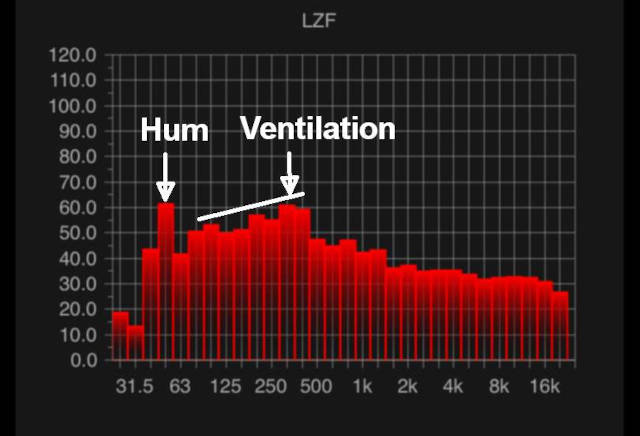
Now, which ANC strategy to apply here is certainly a point of personal preference, but the hum bothers me more than the HVAC noise, so I would prefer the focus to be more on low frequency noise in that situation.
Optimization for a person’s ear canal shape and compensation for a poor seal
Your headphones may automatically (or upon the press of a button) adapt to the shape of your ear canal to maximize ANC performance.
The Bose QuietComfort earbuds II, for example, play a customization tone when you put them in your ear to optimize sound and noise cancellation based on your ear’s response to that tone (picked up by the inward-facing microphones).
Here is how Bose describes it:
CustomTune technology doesn’t just benefit what you hear, it also helps with what you don’t by personalizing the noise cancellation to the shape of your ears. This will precisely soften sounds that are hardest to reduce, like voices.
The over-ear Sony WH-1000XM4 also have an optimizer function, accessible by long-pressing the noise cancelling button (or by using the app). The headphones play a sequence of sounds to optimize the NC depending on your hairstyle, whether you are wearing glasses, and air pressure.
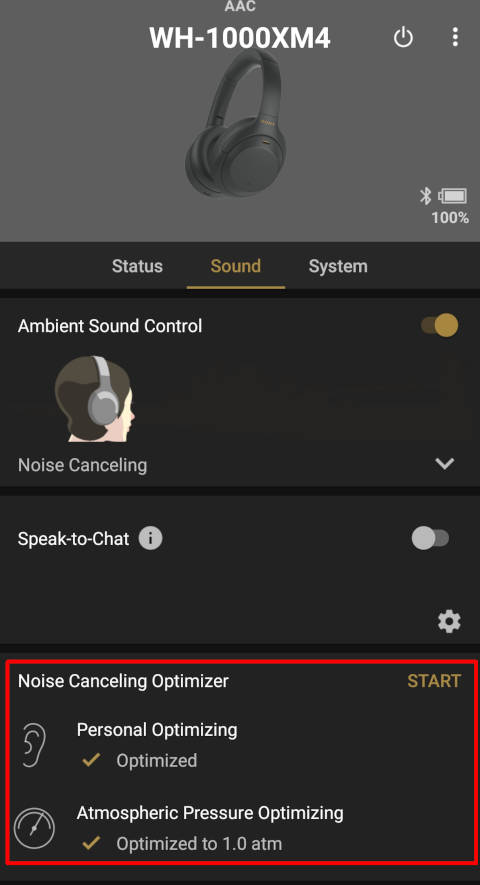
As mentioned before, the M5 have an auto optimizer.
Other headphones may also attempt to compensate on the fly for poor fitting ear tips (leakage compensation) or a poor seal caused by your glasses temple arms to salvage performance without you even knowing it.
While Apple doesn’t state it, it appears to me that the AirPods Pro2 also perform some kind of leakage compensation.
With earbuds that don’t adapt to leakage, you may get almost no noise reduction if the ear tips don’t seal, so I consider this function quite an advantage.
Sub-optimal fit is often the reason why people find that their noise cancelling earbuds block almost no noise for them. In my experience, with over-ear headphones (even without optimizer), this is less of a problem, but the optimization is still nice to have.
Note: Leakage compensation doesn’t beat properly fitting ear tips / ear cups.
I welcome these optimization features. Ideally though, I would like them to be under my control, e.g., via an on/off switch.
Adaptive noise cancelling together with transparency mode
The Bose QuietComfort earbuds II do something with adaptive NC, I have so far not seen in other headphones:
They combine aware/transparency mode with adaptive noise cancelling.
Aware mode lets you hear your surroundings at a normal volume, communicate with other people, and retain situational awareness. If the environment gets loud though, (in my tests the threshold was at around 70 dBA), the earbuds automatically add active noise cancellation to reduce excessive noise.
The louder the noise, the stronger the ANC becomes. As the environmental noise level drops, the earbuds dial back ANC strength. When the level drops below 70 dBA, you are back to full transparency.
This application of adaptive NC makes a lot of sense to me: users may want situational awareness (i.e., no noise cancelling), but at the same time they may be sensitive to louder noises and want their headphones to watch out for these.
However, when the noise gets loud fast, the earbuds increase ANC strength quite fast in response. Some people may find this rapid dialing up of ANC uncomfortable.
If that’s the case for you, you can disable ActiveSense:

Note:
Apart from ActiveSense, the QuietComfort earbuds II also have adjustable, fixed active noise cancellation. The user can use a slider to decide how much noise reduction they need/want in a given environment. User-settings can be stored as presets.
If you want some degree of fixed ANC with situational awareness but dislike ActiveSense, you can save a light ANC-setting as a preset (accessible via long-tap on the earbuds) and use that instead of Aware.
For more information, please read my detailed review and noise reduction test of the QC earbuds II.
What to watch out for and conclusion
Adaptive noise cancellation brings about some interesting innovation. In my experience so far, it has been working well as long as I was in louder environments.
I particularly like the idea of combining adaptive noise cancellation and transparency mode.
For effective noise reduction in quieter settings (bedroom, quiet coffeeshop etc.), however, fixed ANC is still the way to go.
So I would check that the headphones you are considering can be switched to fixed ANC. Adaptive noise cancelling should be an option, not mandatory.
Sometimes I may indeed need little or no ANC in quiet environments. This could allow for less white noise produced by the headphones when listening to music.
When I nap or meditate, however, I want the headphones to shield me from trucks and other noise intruders and don’t mind the white noise at all.
Think about it. How can the adaptive system know what you want without your input?
The system shouldn’t only detect a certain environment and then make assumptions. You would have to be able to communicate your preference as well:
“Watch out for intermittent noises such as truck rumble, footfalls, and door slams.”
Or
“Minimize self-noise. I want to listen to Mozart.”
There is another point that could be crucial for you:
In my experience, when adaptive noise cancelling systems change ANC strength and/or “frequency focus” at short notice, they can produce what is known as “eardrum suck.”
I don’t think this is a real pressure change, but nevertheless the perception can be disturbing for some users. Some people can only tolerate very little eardrum suck, or none at all.
So personally, I’d prefer not to forego fixed ANC at this time. Adaptive ANC as an option is fine, but it should not be the only option.
Ideally the fixed ANC system should have adjustable ANC strength so that you, the user can decide how much noise reduction you need in a given situation.
That way also people who are sensitive to eardrum suck could perhaps adjust the ANC to a level that allows them to block some noise while staying comfortable.

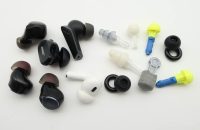
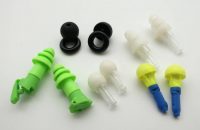

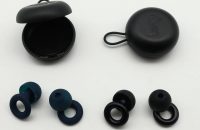
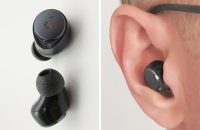

This is the only article I’ve found anywhere that addresses auto NC. For myself, and many others, the auto NC on the Sony XM5s have ruined the product.
Why would I care about white-noise-esque humming sounds in an office when it’s the intermittent conversations that are bothersome? Above and beyond the frequency it decides to cut off, how dare they decide for me what intensity of NC I deserve? To many of us the NC is worse than the XM3/XM4 headsets because of when/where we use them.
Why would they not give customers the ability to switch this “feature” off? Unbelievable.
Thanks for the article +1
Hi Chris,
thank you for the feedback. I agree: these features need to be optional!
Moreover, some companies seem to falsely assume that noise cancelling headphones are mainly used in settings with louder constant background noise. I mean Sony’s recommendation for the M5 to turn off ANC in quiet places is quite telling.
When, in fact, Sony’s M4 are very good against incidental noises arising from a quiet background as well.
All the best.
The marketing arms of every headphone manufacturer do surprisingly poor jobs of describing their products in general, let alone the advantages of various NC technologies. NC has reached the ‘excellent’ stage, as far as tech goes, and this article does a superior job of not just explaining, but coming to quite the fair conclusion that the bells and whistles of “adaptive” are of minimal advantage.
Thank you for your encouraging feedback, Jeff.
All the best.